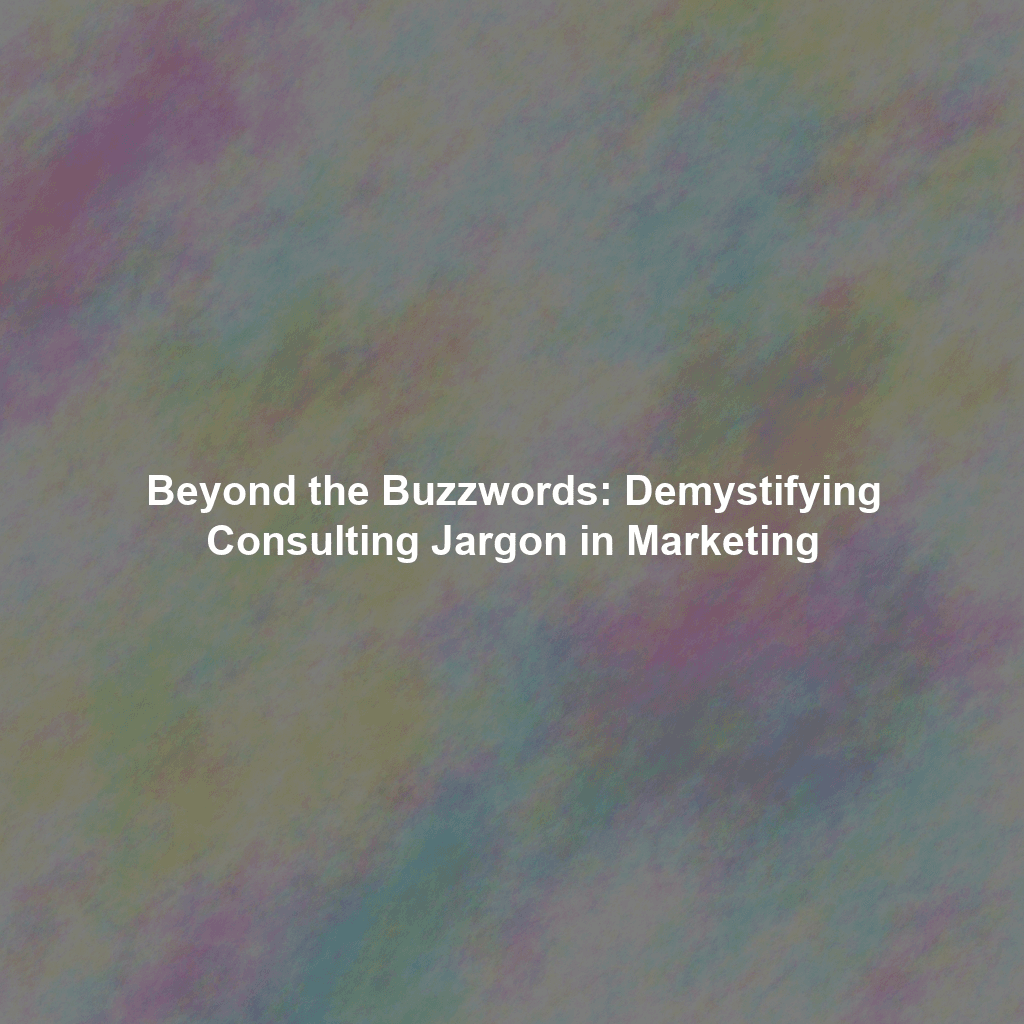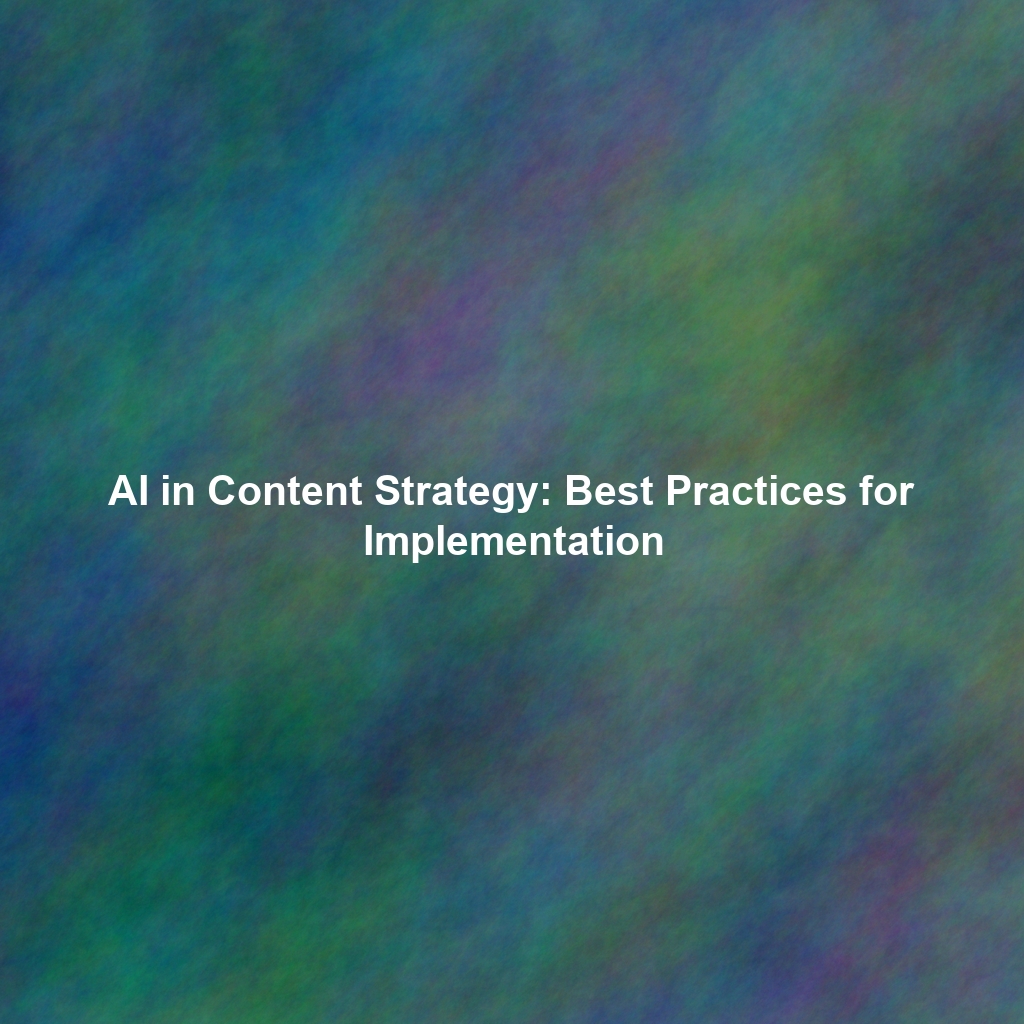Why Consulting Jargon Matters (and Why You Should Care)
Understanding consulting jargon isn’t just about sounding smart in meetings; it’s about genuinely grasping the underlying concepts and how they apply to your marketing strategy. Misunderstanding these terms can lead to misinterpretations of strategic recommendations, hindering effective implementation and ultimately impacting your bottom line. When consultants use terms like “synergy” or “value proposition,” they’re not just throwing around fancy words; they’re communicating specific strategic approaches and expected outcomes. Knowing the nuances of these terms enables you to ask insightful questions, challenge assumptions, and ensure that the proposed strategies truly align with your business objectives.
Decoding the Marketing Consulting Lexicon
Let’s dive into some of the most frequently used, and often misunderstood, consulting terms in the marketing realm:
Synergy: More Than Just Teamwork
While often interpreted as simple teamwork or collaboration, synergy in a consulting context refers to the combined effect of two or more actions that is greater than the sum of their individual effects. In marketing, synergy might involve coordinating different channels (e.g., social media and email marketing) to create a more powerful and integrated campaign. The key is that the result isn’t just additive; it’s multiplicative. For example, a well-crafted social media ad driving traffic to a landing page specifically tailored to that ad can generate significantly more leads than either channel working in isolation. McKinsey often emphasizes operational synergies when looking at marketing efficiency improvements across a portfolio of brands.
Blue Ocean Strategy: Charting Uncharted Waters
Made popular by W. Chan Kim and Renée Mauborgne, Blue Ocean Strategy is all about creating uncontested market space, making the competition irrelevant. Instead of fighting for market share in a “red ocean” crowded with rivals, you aim to create a “blue ocean” of new demand. In marketing, this could involve identifying unmet customer needs or developing entirely new product categories. For instance, consider how Netflix disrupted the video rental market by offering subscription-based streaming, creating a blue ocean where traditional brick-and-mortar stores struggled to compete. BCG frequently utilizes frameworks to help clients identify and enter these ‘blue ocean’ markets.
Value Proposition: The Heart of Your Offering
Your value proposition is the promise of value to be delivered, communicated, and acknowledged. It’s the reason why someone should buy your product or service. A strong value proposition clearly articulates the benefits customers receive and how your offering solves their problems better than the alternatives. Bain & Company are proponents of customer-centric strategies which always revolves around creating a clear, differentiated and compelling value proposition. A poorly defined value proposition leads to confused messaging and ineffective marketing campaigns. Think about Volvo’s emphasis on safety; that’s a clear and compelling value proposition that resonates with a specific target audience.
Customer Lifetime Value (CLTV): Beyond the Initial Sale
Customer Lifetime Value (CLTV) predicts the total revenue a business can expect from a single customer account throughout the duration of their relationship. It goes beyond the immediate purchase and considers the long-term profitability of a customer. Understanding CLTV allows marketers to prioritize customer retention efforts, target high-value customers with personalized offers, and optimize marketing spend. Oliver Wyman often works with companies to improve their customer experience, which then increases CLTV.
Go-to-Market Strategy: Your Roadmap to Success
A Go-to-Market (GTM) strategy is a comprehensive plan that outlines how a company will bring a new product or service to market and achieve its desired market share. It encompasses everything from target market selection and pricing strategy to distribution channels and marketing communications. A well-defined GTM strategy ensures that all aspects of the launch are aligned and coordinated for maximum impact. Consultants often use frameworks to assess market readiness and develop tailored GTM strategies for their clients.
Porters Five Forces
While not strictly marketing-specific, *Porter’s Five Forces* is a crucial tool used by consultants to analyze the competitive intensity and attractiveness of an industry. Understanding the bargaining power of suppliers and buyers, the threat of new entrants and substitute products, and the intensity of rivalry helps inform marketing strategy by identifying opportunities for differentiation and competitive advantage. All the major consultancies use this, McKinsey is the most known for this.
Beyond the Definition: Applying the Jargon
Understanding the definition of these terms is just the first step. The real value comes from applying them strategically. When discussing “synergy,” think about how you can integrate your marketing efforts across different channels for maximum impact. When considering “blue ocean strategy,” look for opportunities to create new markets rather than simply competing in existing ones. And when crafting your “value proposition,” focus on the unique benefits you offer and how they solve your customers’ problems.
Conclusion: Speaking the Language of Strategy
Navigating the world of management consulting can feel daunting, especially when faced with a barrage of unfamiliar jargon. However, by understanding the definitions and applications of these key terms, you can confidently participate in strategic discussions, challenge assumptions, and ensure that your marketing strategies are aligned with your business objectives. Mastering this vocabulary empowers you to collaborate more effectively with consultants and drive meaningful results for your organization.
 Skip to content
Skip to content

